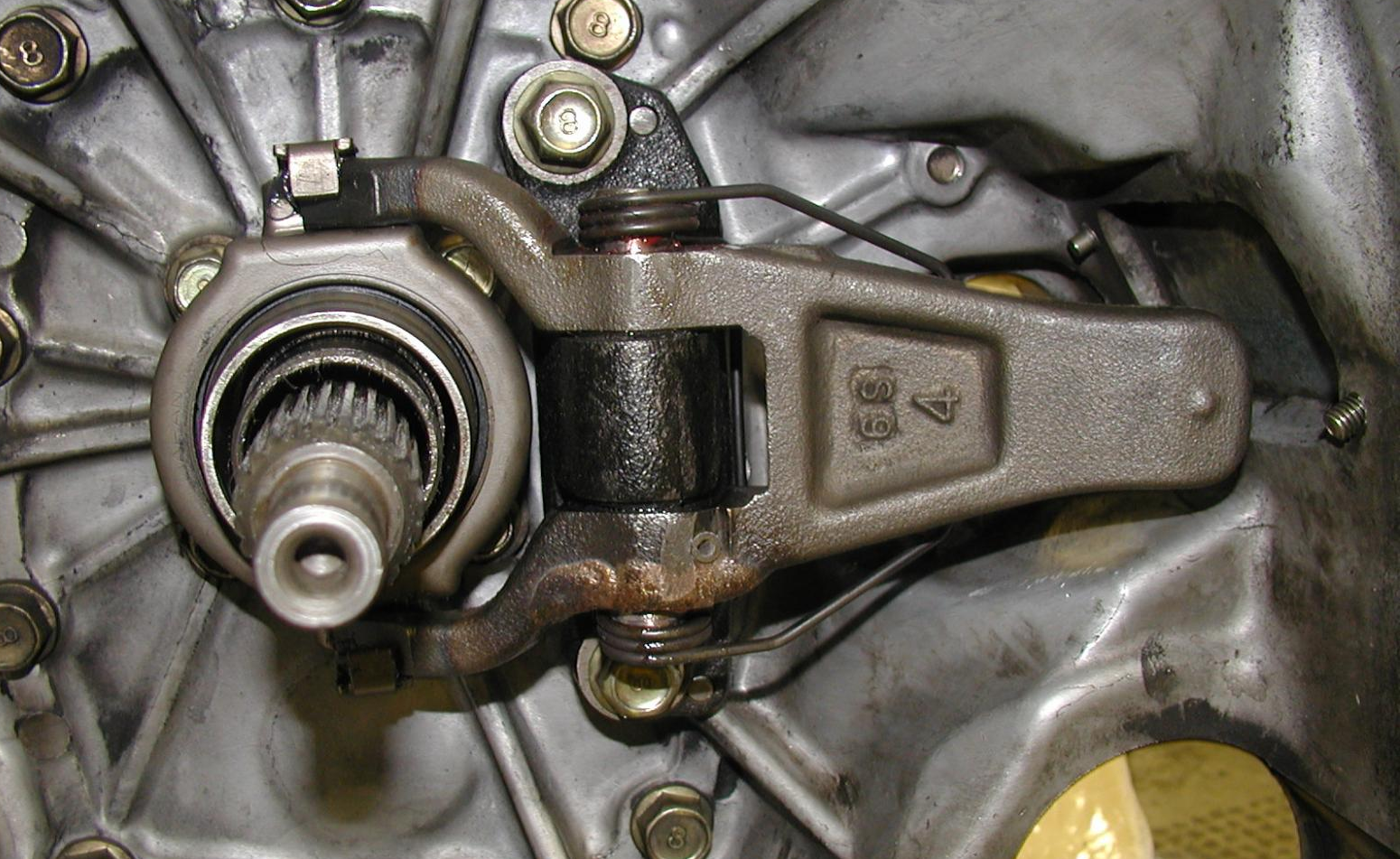What does the clutch fork do?
A clutch fork is a component in a clutch system used to help engage and disengage the clutch. It is the component that helps to convert movement for when clutch pedal is pressed to the actual disengagement of the clutch.
When the driver of the manual car depresses the clutch pedal, the clutch cable or clutch hydraulic master/slave cylinders help to move the clutch fork. The clutch fork pivots on a small lubricated metal ball called the clutch pivot. The fork end of the clutch fork is attached to the clutch release or clutch throw out bearing. When the back end of the clutch fork is pushed up, the fork pivots and pushes the clutch release bearing forward so that it contacts the clutch pressure plate and disengages the clutch plate.
For more information on clutches or clutch replacement visit: Clutch replacements
Causes of a clutch fork not working or damaged:
Clutch fork wear: Over time it is normal for the clutch fork to wear out. It will usually wear around the contact point with the clutch release bearing and around the clutch fork pivot ball if it is not lubricated properly. It may also wear at the contact point with the clutch cable or clutch slave cylinder rod.
Clutch fork snapped: The clutch fork can sometimes snap or crack due to the constant pressure that it must handle in order to move the clutch release bearing.
Not fitted correctly: Sometimes the clutch fork will not be fitted correctly. This could be because the clutch release bearing has not been slotted into the clutch fork correctly. There are multiple ways this can be done, but only one correct way.

Symptoms of a damaged Clutch Fork:
A damaged clutch fork can lead to several symptoms. Here are some of the most common signs of a damaged clutch fork:
- Difficulty shifting gears: A damaged clutch fork can make it challenging to engage or disengage gears smoothly. You may experience difficulty shifting into gear, grinding noises during gear changes, or the gears may feel “sticky” or resistant.
- Clutch slippage: A damaged clutch fork can affect the proper engagement of the clutch, leading to clutch slippage. Clutch slippage occurs when the clutch does not fully engage with the flywheel, causing a loss of power transfer from the engine to the transmission. This can result in a decrease in acceleration and overall vehicle performance.
- Clutch pedal feels loose or spongy: If the clutch fork is damaged, it can affect the operation of the clutch pedal. You may notice that the clutch pedal feels loose, spongy, or excessively easy to depress. This can indicate that the clutch fork is not properly engaging the clutch mechanism.
- Clutch noise: A damaged clutch fork may produce unusual noises when operating the clutch. You may hear rattling, squeaking, or clicking sounds when pressing or releasing the clutch pedal. These noises can be caused by the damaged fork not properly engaging with the clutch release mechanism.
- Clutch engagement issues: A damaged clutch fork can result in inconsistent or incomplete clutch engagement. You may find it difficult to find the friction point, which is the point where the clutch engages and starts to transfer power. This can make smooth take-offs challenging and may cause jerky movements when starting the vehicle.
Learn more about clutch forks here: Learn more about clutches
Clutch fork inspection and replacements in Hamilton:
If your clutch fork needs repalcement, our experienced mechanics at Grimmer Motors can help you. At Grimmer Motors clutch replacements are a common job and our mechanics can easily replace your clutch fork and any other parts that may need replacement.
For clutch fork services in Hamilton, contact Grimmer Motors today!

